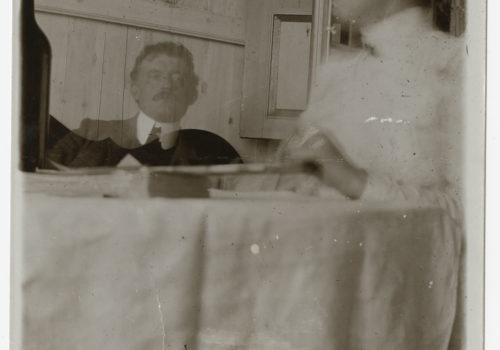Like Bonnard, Vuillard and Mucha, Munch was one of a generation of artists that took up amateur photography at the turn of the century. It was in Berlin in 1902 that he bought a small Kodak camera and started to take pictures.
Other than a number of photographs of paintings, and a few that are souvenirs of places he visited, most of Munch’s pictures were self-portraits. More than to the painter photographers of his generation, it is to the writer photographers of the same period that he may be more usefully compared. He shares with Strindberg, Loti and Zola their obsession with the self-portrait, their interest in writing a life in images. And in a 1930 interview he would declare: “One day, when I am old and have nothing better to do than to write my autobiography, all my self-portraits will see the light of day again.”
After a lengthy halt, Munch began again to take photographs at the end of the 1920s. A first series of self-portraits was shot in the studio. Playing on the transparency effects made possible by long exposures, an idea he had already explored at the beginning of the century, the painter seems to want to become one with his paintings. Another series of self-portraits was shot outside. In a gesture that has
since become common, Munch held the camera at arm’s length, turned toward his own face like a mirror.
Edvard Munch, l’œil moderne
Until January 9, 2012
Centre Pompidou
75004 Paris
11am – 9pm every day, except Tuesday
















